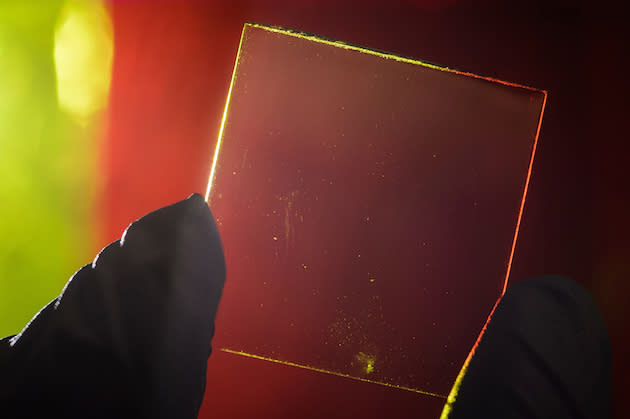See-through solar panels provide power and a killer view

While we've seen some pretty big advancements (and even bigger installations) in solar-energy collection lately, unless you're looking for privacy, one of the biggest light-catchers -- windows -- have to go largely under-utilized. Researchers at Michigan State University might have a solution for that, though. The Spartan scientists have developed a transparent, colorless method for collecting the sun's rays and converting them to electricity, claiming that the tech's applications could be used pretty much wherever clear materials are needed. The system relies on a coating of organic molecules that soak up ultraviolet and near-infrared rays. From there, the rays are pushed to photovoltaic solar cells at the edge of the surface where they're converted into electricity.
The tech isn't as efficient as it needs to be, though. As of now its solar conversion rate is only about one percent versus the 19 percent ideal of other methods. MSU College of Engineering's Richard Lunt knows this is inadequate and says that it's targeting a "greater than five percent" yield for the final product. While the energy produced might be lower than with other formats, the tech's strength could lie in its flexibility -- every window a solar cell or a smartphone that could possibly never run out of juice, for instance.

